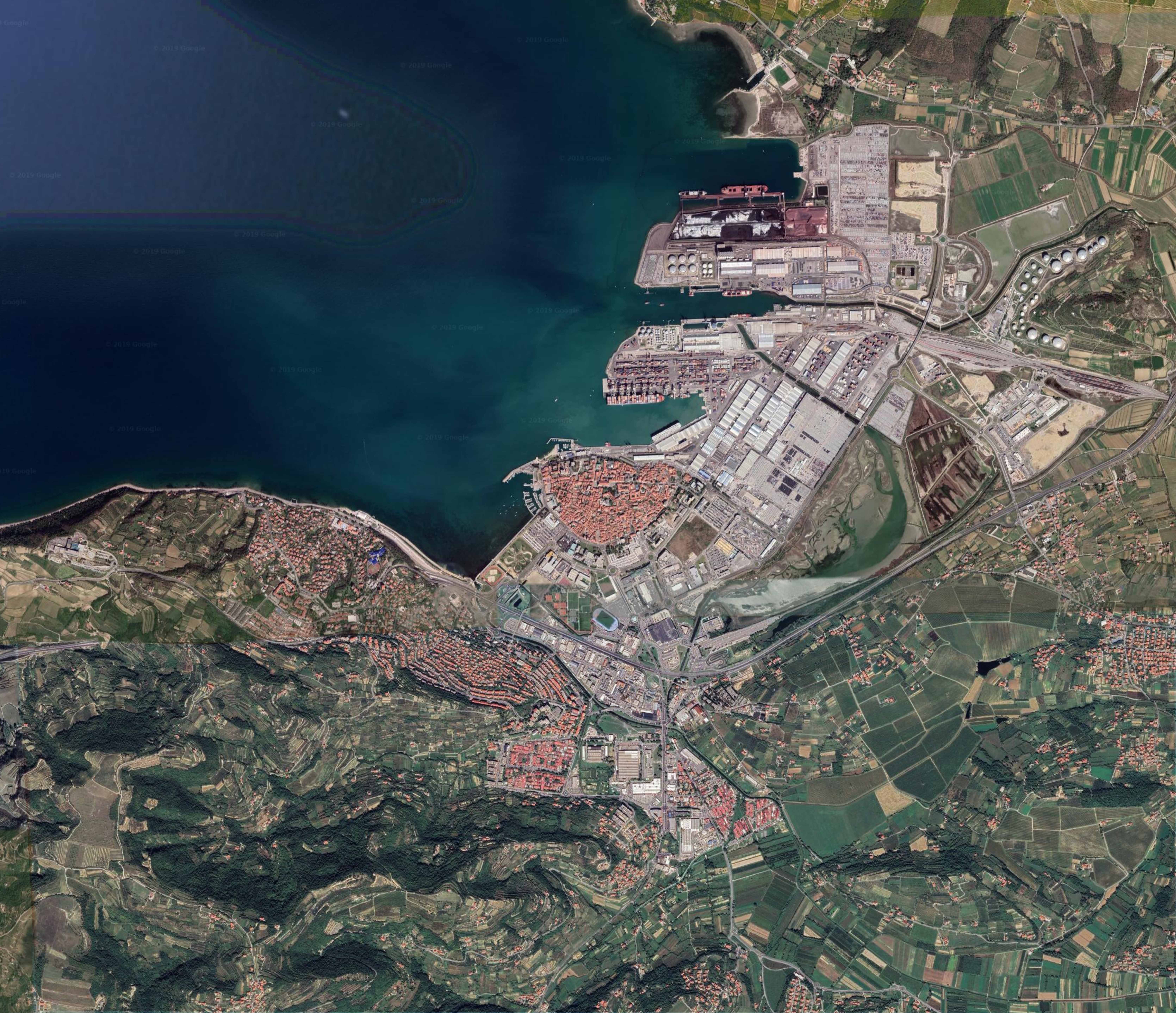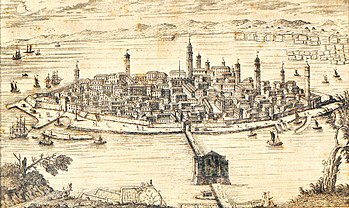On my way to Koper, Slovenia
The city center of Koper is stuck between an industrial port and large parking lots and commercial/industrial areas. But most of the residential areas are in between the sea and vineyards hills and olive orchards and close to sport facilities and parks, making Koper a nice place to live in.
Before Koper
In June 2018, my brother and I were living with our parents. Although we have two very different backgrounds and ways of dealing with life, we, for once, were in the same situation: asking ourselves what would be our next job. My brother’s approach was to go straight to the point: doing some research, calling many people and sending lots of CVs that he would thrown away in no time. Mine was much less practical: doing lots of research, not calling anyone and sending a few CVs that I would spent hours polishing.
But one morning, desperate to find anything that will fit my criteria, I took on his approach: I woke up, compiled several CVs into one, and send it to two research laboratories in Slovenia that I had looked at before but that had ended up in my “Maybe” list - the fact being that I had no other lists. Everything turned out as a potential option for my future. Yet, the choice of Slovenia was not random: I had visited its capital 10 years ago, loved it and I had always told myself that one day I would return to Slovenia.
A few hours later, I received answers from both research labs: the one in Ljubljana did not have any job vacancies; the one in Koper, as the city was called, seemed rather enthusiastic about hiring me. The problem was that I had no idea what Koper looked like, and therefore I couldn’t possibly imagine myself living there. So I did what most people would do in that case: I typed in “Koper” in Google Maps.

If you do it, the first thing that really pops out, it that Koper is by the sea. For several of my colleagues who moved to Koper, that was enough to consider moving forward with their job application: a job by the sea! For me, of course, it wasn’t enough.
On my way to Koper
When I travelled to Koper for the first time, in August 2018, my knowledge of Koper was much more substantial. I had spent hours looking at the city of Koper through Google Maps. I used all the features available - the plan view, the satellite view, and the street view that allows you to drag-and-drop a yellow guy and look around. The only view I didn’t look at, because at that time I didn’t know it existed, was the 3D view.
That was quite unfortunate - the hills that surround Koper and that are completely invisible using the standard view of Google Maps would have appeared from their best angle, proud of their cute villages, narrow roads and beautiful vineyards and olive groves. But Google Maps, as smart at it is, didn’t show this to me. Instead, it displayed in a quite bluntly manner a very tiny old city centre, swallowed up by huge parking lots, lots of shopping malls and one big port area right next to the supposedly historic city centre.
So while the taxi was driving me to my soon-to-be home, I was not looking at the city with the eyes of someone ready to be filled with wonder. Nor was I expecting to enter a industrial city without the slightest once of charm. I knew how the city would look like. I knew where it was. After all, with Google Maps, it was as if I had already been there.
If you haven’t looked yet at Google Maps or if you have stumbled upon this article randomly, you might still not know where is Koper. Koper is a coastal town in Slovenia. If this doesn’t help, it’s probably because, as many people whom I later met in Koper and who came from everywhere in the world except the Balkans, you are not sure where is Slovenia, or you mistake it for Slovakia… But anyways, there are both somewhere in Eastern Europe, right? Or is it Central Europe?
Slovenia is actually a country in Central Europe (and so is Slovakia). Put simply, it (Slovenia) is surrounded by Italia to the west, Austria to the North, Hungary to the east and Croatia to the south:

Slovenia has the tiny coastline ever - 46 kilometres only, stretching (or stuck) between Italia and Croatia. And out of the four major cities of the coast (Isola, Portoroz and Piran being the others), Koper is the western city, i.e. the closest to Italia. This is all what Google Maps says.
Koper
Back to my taxi ride. Here I was, then, entering Koper. Unfortunately, when I arrived, it was already dark and I only had time to catch a glimpse at the two yellow gantry cranes of the port and the complicated interlacing of the highways. I had to wait until the next morning to finally get to know Koper in person.
So first thing first in the morning, I went through my dining room straight to my balcony. My landlord hadn’t lied, and neither had Google maps. I could see the sea from my balcony! But also the huge parking lots and the big shopping malls, just outside the historic city centre.
But what Google Maps did not tell me, and neither did my landlord, is that I could also see the mountains (!!!) and the Muggia peninsula - a tiny, hilly and nice piece of land crossed by the Italian-Slovenian border. If I could (and still can) see all of this, it’s because my flat is on top of a hill that is covered by most of Koper’s residential blocks (Semedela). Fortunately, and although I had underestimated the steepness of the hill, my landlord told me how to follow narrow passages and steps that go between kaki trees and vegetable gardens (very common in Koper) down to the bottom of the hill. Again something that I couldn’t see through my virtual tours of Koper.
Google Maps had also been quite bad at conveying the peacefulness of the promenade along the sea and that of the main square, the cuteness of the marina and of the coloured narrow streets, the last two being separated by Taverna, an imposing old salt warehouse that regularly hosts concerts and festivals.
Google Maps also didn’t tell me that Koper used to be an island. Yes, a very tiny and cute island in the Adriatic Sea, connected to the land by a small road that leads to Vrata Muda, the Old Gate. As the years went on, these swamp were progressively filled with building and shops and Koper is not an island anymore.

What Google Maps is also hiding is the beautiful sunset that you see above the horizon, or behind the hill during winter. When the mountains are also visible, especially after it rained, it creates the most picturesque sunset. The sea, the mountains and the sun, all at the same time!
Google Maps also didn’t tell me that my office is overlooking the garden of the Museum of the Karst, which is the most peaceful view one could ever dream of, especially when they play some classical music inside.
Koper isn’t as beautiful as Piran, one of the “hidden gems” of Europe, nor it is as beautiful as Ljubljana, the capital of Slovenia. At first, with its parking lots and its industrial and sometimes noisy port, it even looks ugly. And this is what Google Maps is mainly saying. But when you approach it a bit closer, you see it differently. You see it along with its surrounding green hills; you walk up and down the peaceful hill with rows of coloured houses, you notice the kaki and olive trees, you walk along the small canal, you appreciate the cleanliness of the streets, you look enviously at the onlookers eating their ice-creams, and you even start to see some poetry in the incessant ballet of the containers being unloaded from the gigantic cargo ships, so big that from my window I always have the feeling that this tiny city center will one day disappear into one of them, and that would be very unfortunate.